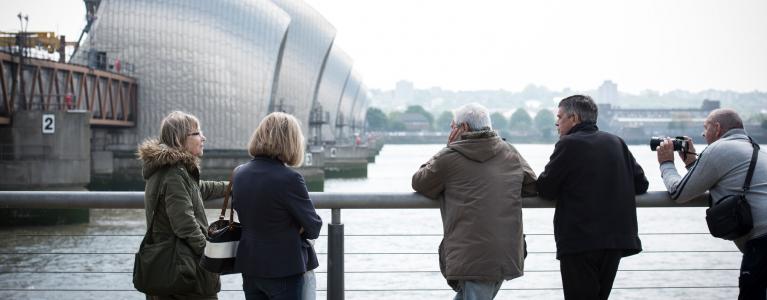
The London Assembly Environment Committee is calling for an acceleration in investment from Thames Water into its wider sewer infrastructure to ensure that it has the capacity to deal with intense rainfall events.
This is after hearing evidence that 40 million tonnes of raw, untreated sewage are currently discharged into the Thames every year during storm events. [1]
The Committee has today published its report – ‘Water and London’s Rivers’ – which includes 21 recommendations to the Mayor, Thames Water and Government, covering four main areas, drinking water and water scarcity, wastewater and pollution, flooding, and maximising opportunities to create a sustainable water system.
London’s sewerage system was originally developed in the 19th century to deal with a population of around 2 million people.[2] This system is now significantly strained, as the population of London today just under 9 million[3] and is expected to grow to over 10 million by 2040.[4]
Insufficient capacity in the sewage pipes to contain all the rainwater and sewage, and to prevent it from ‘backing up’ into people homes, means it is released through storm overflows.
Key recommendations within the report include:
- Thames Water should coordinate with Ofwat to open a consultation on new water tariff options for the 2025-2030 price control period. This should include options to link the charging structure to water use, as well as social tariffs to ensure water remains affordable to all.
- Thames Water should accelerate investment in its wider sewer infrastructure in areas of London not covered by the Thames Tideway tunnel, to ensure that it has the capacity to deal with intense rainfall events.
- The Mayor should work with Tideway to ensure that the Thames Tideway Tunnel is completed on schedule by 2025.
- The Mayor should double the target in his Transport Strategy to 100,000 square meters a year of roads draining into SuDS per year. Transport for London (TfL) should also double its targets for SuDS installation to deliver 10,000 square metres of roads draining into SuDS per year.
- The Port of London Authority (PLA) should publish the findings from its feasibility assessment for a River Ultra Low Emission Zone (RULEZ). In response to this, the Mayor should set out his position on such a scheme, and any plans for its implementation.
The report comes after a two-part investigation by the Environment Committee, with the Committee firstly speaking with Thames Water, River Action, South East Rivers Trust, Thames21 and the Greater London Authority (GLA). The Committee then heard from Thames Water, the Environment Agency, the PLA, the GLA, Zoological Society London (ZSL) and Tideway in the second Committee meeting.
The Committee also carried out two site visits as part of the investigation, visiting the Thames Barrier with the Environment Agency and the Port of London Authority (PLA), and also visiting Mogden sewage treatment works in west London with Thames Water.
Léonie Cooper AM, Chair of the London Assembly Environment Committee, said:
“The London Assembly Environment Committee investigation looked at London’s water and rivers to explore the impacts of climate change, flood risk, sewage pollution, the potential to reduce emissions and how to ensure sufficient water for London in the future.
“In recent years, as a result of climate change and rising sea levels, we are seeing more instances of surface water flooding in London, and it is clear that further investment is needed in this area.
“Our investigation gave the Committee a fascinating insight into the challenges and opportunities for Thames Water, the Environment Agency and the Mayor when it comes to protecting our water and rivers.
“We heard how the current level of water usage in London is unsustainable, and places significant strain on London’s water supply.
“Change is urgently required to protect London’s water supply for future generations, and there must be a joined up approach, with so many stakeholders involved in managing and protecting our water and rivers.
“I urge the Mayor, Thames Water and Government to take forward our recommendations and create a sustainable water system for future generations.”
Notes to editors
- Tideway, Tideway | Londoners LOVE the River Thames, data shows, but HATE its pollution problem, 1 December 2022
- Historic England, The Story of London’s Sewer System, March 2019
- London Datastore, Demography
- London Datastore, February 2023
- The report is attached.
- Léonie Cooper AM, Chair of the Environment Committee throughout the investigation, is available for interview.
- Find out more about the work of the Environment Committee.
- As well as investigating issues that matter to Londoners, the London Assembly acts as a check and a balance on the Mayor.
For more information, please contact Tony Smyth in the Assembly Media Office on 07763 251727. For out of hours media enquiries please call 020 7983 4000 and ask for the Assembly duty press officer.